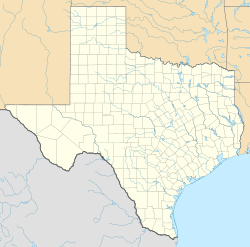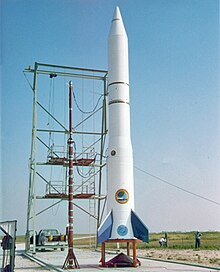
Waco Regional Airport is an airport in Waco, McLennan County, Texas. It is owned by the City of Waco.

Foster Air Force Base is a former United States Air Force facility in Texas, located in Victoria County, approximately six miles (10 km) east-northeast of Victoria.

Walker Air Force Base is a closed United States Air Force base located three miles (5 km) south of the central business district of Roswell, New Mexico. It was opened in 1941 as an Army Air Corps flying school and was active during World War II and the postwar era as Roswell Army Air Field (RAAF). During the early years of the Cold War, it became the largest base of the Strategic Air Command. It is also known for the Roswell UFO incident, an event that occurred on 4 July 1947. It is alleged that a "flying disc" crashed during a severe thunderstorm near the base at Corona, New Mexico.
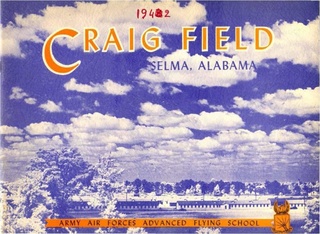
Craig Air Force Base near Selma, Alabama, was a U.S. Air Force undergraduate pilot training (UPT) installation that closed in 1977. Today the facility is a civilian airport known as Craig Field Airport and Industrial Complex.
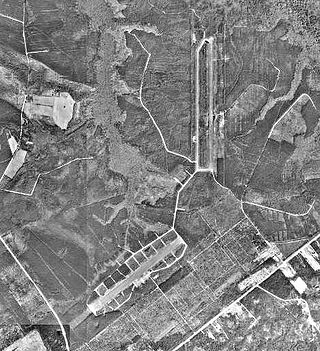
Marine Corps Outlying Field (MCOLF) Camp Davis is a military use airport northeast of the central business district of Holly Ridge, in Onslow County, North Carolina, United States. It is used as a training facility by the United States Marines of Camp Lejeune and Marine Corps Air Station New River.

Sharpe Field is a closed private use airport located six nautical miles northwest of the central business district of Tuskegee, a city in Macon County, Alabama, United States. This airport is privately owned by the Bradbury Family Partnership.

Aloe Army Airfield is an abandoned airfield located 7 miles (11 km) west of Victoria, Texas.
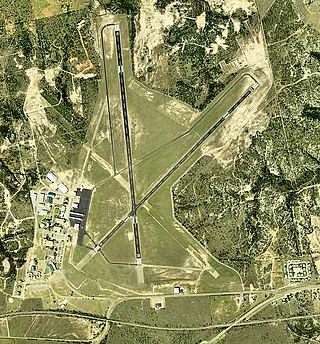
Avenger Field is a Texas airport in Nolan County, three miles west of Sweetwater. The National Plan of Integrated Airport Systems for 2011–2015 called it a general aviation facility.

Matagorda Island Air Force Base is a closed military airfield on the north end of Matagorda Island, northeast of Corpus Christi, Texas. It was closed by the United States Air Force in 1975.

Coolidge Municipal Airport is a city-owned public airport 5 miles southeast of Coolidge, in Pinal County, Arizona, United States.

Dateland Air Force Auxiliary Field is an abandoned military airfield located in Dateland, Arizona, 40 miles (64 km) east of Yuma, Arizona. Its last known military use was in 1957.
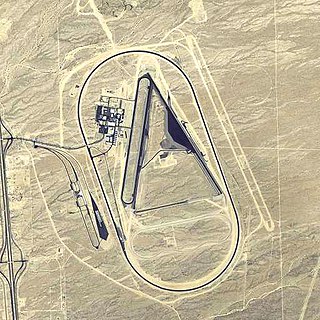
Yucca Army Airfield is a former military airfield located about 1 mile (1.6 km) west of Yucca, in Mohave County, Arizona, United States. It is on the east side of Interstate 40, 25 miles (40 km) south of Kingman. It is now used as a private facility owned by Fiat Chrysler Automobiles named Chrysler Arizona Proving Grounds.

Graham Air Base was a United States Air Force base located in Marianna, Florida. After it was closed in 1960, it was reused as Marianna Municipal Airport.

Dalhart Army Air Base is a former World War II military airfield complex near the city of Dalhart, Texas. It operated three training sites for the United States Army Air Forces from 1943 until 1945.
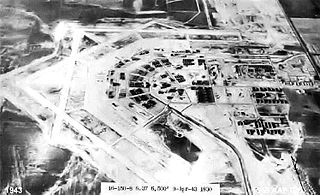
Stuttgart Army Airfield is a former World War II military airfield, located 7 miles north of Stuttgart, Arkansas. It operated as an advanced pilot training school for the United States Army Air Forces from 1942 until 1945.

Grand Island Army Airfield was a United States Army Air Forces airfield which operated from 1942 to 1946. After its closure, the base was reopened as Central Nebraska Regional Airport.

San Angelo Army Airfield is an inactive United States Air Force base, about 8 miles south-southwest of San Angelo, Texas. It was active during World War II as a training airfield. It was closed on 30 November 1945.

Freeman Army Airfield is an inactive United States Army Air Forces base located in2.6 miles (4.2 km) south-southwest of Seymour, Indiana.

Eagle Pass Army Airfield is a former World War II military airfield complex. It is located 10.6 miles (17.1 km) north of Eagle Pass, Texas. It operated as a training base for the United States Army Air Forces from 1943 until 1945.

The 77th Flying Training Wing was a wing of the United States Army Air Forces. It was assigned to the Central Flying Training Command, and was based in Texas between 1943 and its disbandment on 16 June 1946.

